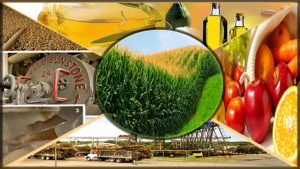 Poor soils, lack of irrigation, and limited access to inputs, including fertilizer, are some of the barriers farmers face to increasing food production, and alleviating food insecurity, in sub-Saharan Africa. Incorporating trees on farms can help increase yields by building soil fertility, reducing erosion, retaining water, or providing shade. And many species produce high-value fruits, timber, fodder, or medicine that can be sold or used to meet household needs. Ecosystem benefits like habitat creation and carbon sequestration are added benefits.
Poor soils, lack of irrigation, and limited access to inputs, including fertilizer, are some of the barriers farmers face to increasing food production, and alleviating food insecurity, in sub-Saharan Africa. Incorporating trees on farms can help increase yields by building soil fertility, reducing erosion, retaining water, or providing shade. And many species produce high-value fruits, timber, fodder, or medicine that can be sold or used to meet household needs. Ecosystem benefits like habitat creation and carbon sequestration are added benefits.
Planting nitrogen-fixing leguminous tree species, likeFaidherbia or Acacia albida, in maize fields has helped achieve up to four-fold yield increases in Malawi, Zambia, Tanzania, and Ethiopia. During the rainy season, when crops are planted, the Faidherbia acacia loses its nitrogen-rich leaves as it enters dormancy. Crops are provided with a source of nitrogen, and the tree’s bare branches don’t block sunlight. And when the availability of fodder is limited in the dry season, the trees produce seed pods that livestock can eat.
While legumes improve soil fertility, planting fruit trees amongst other crops can provide emergency income and a source of food in times of scarcity. For small farmers likeVirginia Wangui Njunge, who farms two acres north of Nairobi in Kenya, planting fruit trees is a way to minimize risk by increasing productivity and crop diversity. Njunge sells avocados, guavas, apples, and mangos from her trees that grow along with vegetable crops, including tomato and cabbage. Intercropping fruit trees with annual and indigenous vegetable crops to provide food and income while trees mature is a common practice in Kenya.
The World Agroforestry Center’s Agricultural and Tree Products Program developed better varieties of popular trees that grow wild in forests and on farms, such as bush mango (Irvingia gabonensis) and African plum (Dacryodes edulis). These trees produce larger, sweeter fruit, mature faster, and grow at lower heights than other trees to make harvesting easier. Often planted with cocoa in Cameroon, the fruit trees have earned some farmers five times more income than cocoa, reducing their dependency on cash crops that are prone to major price fluctuations.
Cocoa is also grown with wild African plum, ndjassang (Ricinodendron heudolotii), orange, and avocado trees inCameroon and Nigeria. The World Cocoa Foundation’s Sustainable Tree Crops Program has helped farmers in West Africa like Mathias Evouna refine shaded cocoa production methods to reduce pesticide use and boost yields. Implementing management practices such as pruning that he learned through this program, Evouna produced a third of his total yield on less than 15 percent of his land. Fruit trees in shaded cocoa production provide substantial food and income, while the system prevents total deforestation, provides habitat for forest species, helps mitigate climate change through carbon sequestration, and enhances nutrient and water cycling.
More trees exist on farms in Kenya than in forests and plantations combined. On-farm timber production is a growing industry, and may help relieve logging pressure on scarce natural forests. Trees that can be sold for building materials and firewood or charcoal production help diversify income of small farmers. Farmers typicallyplant timber species, particularly Grevillea robusta, along with vegetables and grains. The root systems of the trees help stabilize slopes typically found on coffee and tea farms, and retain water.
Kim Kido is a research intern with the Nourishing the Planet project.
To purchase State of the World 2011: Innovations that Nourish the Planet please click HERE. And to watch the one minute book trailer, click HERE.







